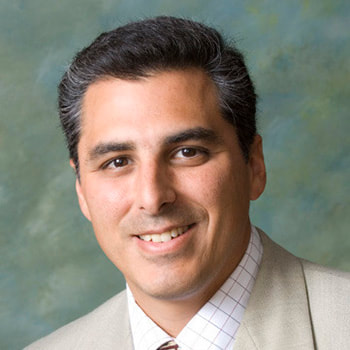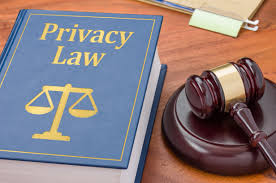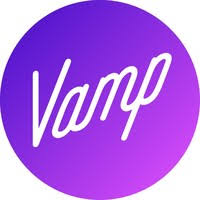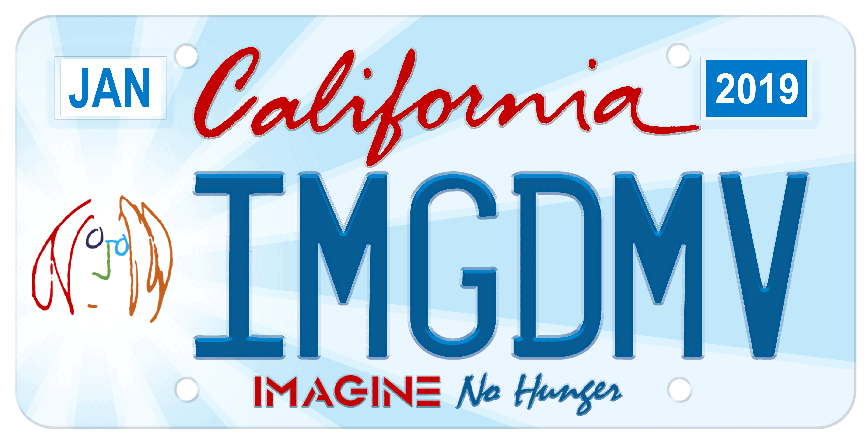 The Board of Directors of the Food Research & Action Center (FRAC) has selected Luis Guardia to serve as president of the anti-hunger organization. Guardia, who most recently served as the Chief Business and Financial Services Officer at Global Impact and Chief Operating Officer at the ONE Campaign, will bring 30 years of experience in nonprofit management and a wealth of expertise in advocacy, health care, international development, philanthropy, and public media to FRAC when he assumes his new position on March 1, 2020. He will succeed Jim Weill, who served as FRAC’s president for the last 22 years. “We are very pleased that Luis is coming on board as FRAC’s president. For 50 years, FRAC has made great strides in expanding the reach of proven solutions to ending hunger in America,” said FRAC Board Chair Judith Whittlesey. “Luis’ vision, energy, and extensive expertise will prove invaluable in building on these accomplishments and ensuring millions more people across the country have access to the nutrition they need.” Guardia said, “I am thrilled and privileged by the opportunity to build on FRAC’s impressive record of achievement. I have long admired FRAC’s mission and look forward to leading the fight against hunger and creating greater social justice for all in partnership with the Board and the incredibly talented staff at FRAC.” Whittlesey offered deep gratitude to Jim Weill. “Jim’s tenure as FRAC’s president has been distinguished by a multitude of accomplishments. Jim has been a stalwart champion of the federal nutrition programs and an exceptional leader who broadened and strengthened FRAC’s network of state and local anti-hunger advocates, including the launch of D.C. Hunger Solutions and Maryland Hunger Solutions. Jim’s commitment to FRAC’s mission, its staff, and the people it serves is well known. We wish Jim and his family all the best as he begins retirement.” Prior to his roles with Global Impact and the ONE Campaign, Guardia held a variety of management roles with the International Center for Research on Women, Corporation for Public Broadcasting, and NPR. Guardia also serves on the boards of PAI, Kalanidhi Dance Company, and the Fundraising, Finance, and External Audit Committee of ActionAid International. Guardia previously served on the boards of the Society for International Development, Mary’s Center, and the PBS Technology Committee. Guardia received his Master of Business Administration from University of California, Los Angeles, Master of Science in Systems Engineering from The George Washington University, and a Bachelor of Arts in economics and art history from the University of Virginia.
0 Comments
 Beginning this month, businesses around the country are required to answer requests from Californians about personal data companies collect about them. A big change in data privacy protection is ramping up in California, and many businesses will soon feel its effects. Beginning this month, large businesses around the country that operate in California must disclose to their Golden State customers who ask for it any data the companies collect about them. Those customers can then request that the information be deleted or demand that it not be sold. Companies that fail to comply could face significant fees and penalties. The law, called the “California Consumer Privacy Act,” is the first sweeping data privacy measure in the country. It is intended to give consumers more control over their personal data at a time when breaches are rampant and personal information is mined, sold and used in ways consumers have little say over. The logistical challenges, independent of the legal challenges, are a significant undertaking for businesses who have to comply with the act. The law applies to for-profit companies that operate in California and meet one of three criteria: They have a gross annual revenue of at least $25 million; they buy, sell or share personal information for at least 50,000 California consumers; or they make at least half of their annual revenue by selling consumer data.  The companies that the law covers are mostly large private and public companies with significant reach. A report by California’s attorney general estimated that compliance will cost businesses roughly $55 billion initially, and the U.S. Department of Justice expects between 15,000 and 400,000 businesses to be affected nationwide. Fines for failing to comply range from $2,500 to $7,500 per violation. California’s law provides a broad umbrella for what constitutes personal information, going beyond the typical name and driver’s license number to include information such as internet browser history, geolocation data and audio. “All those kinds of information can be associated with a person and contain intensely private information,” said Jacob Snow, an attorney for the American Civil Liberties Union of Northern California who focuses on technology. One of the most significant aspects of the California law is a clause that gives the state’s consumers the right to sue over a data breach that meets certain criteria. If they are successful, companies who expose consumer data could be forced to pay between $100 and $750 per Californian affected by a breach and any other fees the court deems appropriate. California’s approach is starkly different from Florida’s. Like most states, Florida has few laws regulating data privacy. None allow consumers to fully understand where their data lives and to take it back as California’s does, though the Sunshine State does have a law requiring businesses to notify consumers after a data breach of a certain size. “Outside of that, there isn’t anything that really requires (companies) to take reasonable measures to protect personally identifiable information,” said Sri Sridharan, director of Cyber Florida, the cybersecurity center housed at the University of South Florida. A bill proposed recently by Sen. Doug Broxson, R-Gulf Breeze, would get Florida slightly closer to California’s law by requiring websites to tell Florida consumers what personal information it collects and let them opt out of the sale of their data. The regulation is widely considered to be the first in what will likely be a tide of similar state laws and potential federal legislation. That means companies will need to figure out how to comply with multiple laws and still do business effectively. You could end up with a federal floor and then still have different states that set different levels of privacy protections for consumers, even if those privacy levels conflict Some companies are expected to take a segmented approach for now, where they would have one division for California and one for the rest of the country, as many do to comply with Europe’s significantly more stringent data privacy laws. Others, such as Microsoft, are complying with California’s law and offering the same protections to customers around the country.  Not all Snapchat users are happy about the bold, new version of the ghost, but there is a very good why Snap made the change - and it might hint at the future of tech branding. Snapchat’s cute ghost logo is now surrounded by a decisively bold line that may feel too thick for comfort, at least at first glance. In fact, many users aren’t happy about the change and took to Twitter in numbers to express their feelings. An instant reaction and exposure to the discussion, and the App, reason number one? Snap says the bold line makes the app’s logo more visible and eye-catching. This is indeed true and because it’s so different from the thin lines that customary modern-day branding uses, it works. Still, some users are threatening to delete the app over it, or at least hide it away in a folder so they don’t have to look at it. One user described how it didn’t “match” the other apps on their phone. Thinness has become a design standard—largely thanks to Apple and its obsession with clean, thin minimalism. Across the internet, lighter line weights have become associated with the tech companies, as well as clean, clear, user-centered design—chunky lines look like Comic Sans compared to this sleek aesthetic. If you scroll through your phone and look at app icons, you’d be hard-pressed to find many apps that embrace the kind of thick line that Snap now has with its new logo.  But that’s also exactly what helps Snap—and the few other companies daring to move beyond the minimalist logo paradigm—stand out. The subtle shift makes sense within the context of the company’s latest release, Spectacles 3, which isn’t about pleasing the masses but is marketed instead to the creative, fashion-forward, early adopters of the world. Amid the clean lines and minimalism, Snap is bold and not afraid to show it. Source: Katharine Schwab, Fast Company.
Hernando County, Florida is the latest to declare itself a Second Amendment sanctuary and did so at the urging of county Commissioner Steve Champion, owner of American Gun and Pawn shop in Brooksville. Two weeks ago, Citrus County, Florida adopted the same designation. Commissioners unanimously approved the resolution on Tuesday. Champion acknowledged it had “no teeth” and was mostly “ceremonial.” Hernando joins other communities in Florida and around the nation that want to highlight their support for the right to bear arms, the Second Amendment to the U.S. Constitution. "Of course,'' Champion said, "all of the Bill of Rights are important.'' Commissioners quibbled over the resolution’s wording. Commissioner John Mitten voiced concern about the term “sanctuary,” as it has referred to communities that didn’t enforce certain rules regarding undocumented residents. Champion wanted to mimic the wording used by other communities.
Champion has taken heat for efforts to demonstrate his support for gun ownership, which some see as promoting his business. Some criticized his recent suggestion to seek federal funding for a long-distance gun range on public lands in the county. The idea has not gone further than the investigation stage.  Publix shoppers can now renew vehicle registrations in less than two minutes at one of three stores in Hillsborough County offering a self-service kiosk through the tax collector’s office. Hillsborough County Tax Collector Doug Belden announced the “Florida MV Express” program’s expansion Tuesday morning inside the grocery chain. The bright blue and yellow automated kiosks are up and running in three Publix locations. The kiosks were provided to Hillsborough County free of charge from developers Intellectual Technology Inc., in exchange for the proceeds from a 2.25 percent fee on credit or debit card payments, Belden said. Kiosks inside the tax collector’s branch locations accept cash payments at no additional charge. Vehicle registration kiosks have long been mainstays in grocery stores in California, Colorado, Hawaii and at least a dozen other states. But bringing the customer service innovation to Florida first required about two years of negotiations with the Department of Highway Safety and Motor Vehicles, rewrites to state legislation and another year of negotiations with Publix executives, Belden said. “This is huge for us,” Belden said Tuesday. "Especially as our county continues to grow, we’ve been looking for ways to take the pressure off of our customer service representatives in different ways with emerging and cutting-edge technology. You can’t just keep building more branches.” Belden’s office became the first agency in Florida to adopt the automated kiosks with a soft launch in early February at four of its busiest tax collector locations: in Brandon, Drew Park, North Tampa and Ruskin. Since then, those four kiosks have processed more than 20,000 vehicle registrations, Belden said. The three Publix kiosks, only operational for a few days, have already renewed 160 vehicle registrations. Belden said he hopes his office can find ways to expand the kiosks’ uses and locations. For now, the kiosks can only renew vehicle registrations for personal vehicles and trailers that don’t require an IRS Heavy Vehicle Use Tax or a new license plate to be issued. They can’t renew registrations for autonomous vehicles, government vehicles, boats, mobile homes, National Guard or personalized license plates and cannot switch to specialty license plates. It’s a promising start, said Brian West, the supermarket’s Media and Community Relations Manager. “Hillsborough was the first county in Florida to do this, but for Publix, these are the first stores in our entire footprint to have these kiosks — and we operate in seven states,” West said.  Since 2017, MarTech has been recording, analyzing, and tracking every ad released in the UK and US in the not-for-profit sector. They predict both short term sales spikes and long-term brand building based on the performance of the ad. Because of their work with SURF Survivors Fund in Rwanda, this is an area that has interested them greatly since theystarted, but it’s been disappointing to see that non-profit advertising is consistently one of the worst performers across sectors for long term growth. But why is that? Is it a budgetary issue? Are creatives too often using juniors for the creative? The issue lies with the historic use of shocking and upsetting imagery to break through consumer apathy in order to get that donation. And if you look at the short-term sales spikes for NFP ads that becomes much clearer. This year’s Save the Children Pneumonia Appeal ad is a good example of this. It is a touching and powerful ad that provides an insight into the pneumonia crisis in Kenya. It scored significantly for a short terms sales spike and will surely have resulted in an influx of donations for the campaign and it will most probably be considered an effective ad for the charity. Similarly, a Barnardo’s advert from this year, a tragic story of online grooming also scored significant short terms sales spike. However, in both cases, each ad scored only 1 star for long term effectiveness. There is certainly an argument that in both cases the ads are created to produce a surge in donations, and this seems to be exactly what they did do. However, is there a way to increase donations and also accelerate long-term brand building that will potentially provide continuing positive impact for a charity? On the other end of the scale, the two best-performing charity ads in the UK in terms of brand growth over the past two years, are Cancer Research Angela’s Results ad from this year and Battersea Dogs and Cats Home, Animal Journalist ad. Both of these ads scored 5+ stars for long term brand building, and not insignificant short-term sales spikes. Animal Journalists, part of a longer campaign from the charity from 2018, is humorous and there is not a single shot of a distressed animal, instead, we are treated to a more playful and fun framing of dogs and cats. Even the short term sales spike is reasonable, 22% lower than the Save the Children pneumonia appeal ad, but it still performs better than more than half of all NFP ads for this metric. The Cancer Research ad, Angela’s Results focuses on someone getting the news that their cancer is in remission, it’s a short bomb of extreme relief and happiness. And for short term sales spike it was more effective than 90% of NFP ads in the last two years, and only 8% less effective for this metric than the Save the Children ad. Emotional advertising campaigns are generally more profitable for long term growth. This data shows that how those emotions are applied to creative will have different results for an organization. What’s important to understand for charities is that it is possible to get that short-term donation spike, but at the same time ensure that you positively build your brand for the future.  Vamp (https://vamp-brands.com/) has won Best Influencer Marketing Campaign at the Ewards and Best Influence Campaign at The Online Influence Awards for their campaign with Adobe Lightroom. The campaign used social creators to drive downloads of Adobe Lightroom. Vamp influencers shared content created with Lightroom and behind-the-scenes tutorials on how they did it. Vamp then took the highest-performing posts and amplified them with paid media for maximum reach. By the end of the campaign, 21 million target customers had been reached and the app had been downloaded 105,333 times. The cost per download was less than $1, seven times lower than the industry average. “We are honoured to have our Adobe Lightroom campaign recognised at these awards. The content our community created was truly outstanding and proved extremely effective in capturing their audience’s attention. Coupled with strategic paid amplification, we were able to drive some amazing results.” said Vamp’s Co-Founder Aaron Brooks. Tully Burne, Photography Segment APAC, Adobe said: “Each content creator had their own unique storytelling style and that – coupled with strategic, paid amplification – has delivered amazing results, both in terms of installs and ongoing product engagement and usage.” These award wins wrap up another successful year for the global influencer marketing platform. Just last week they were named in the top twenty fastest growing tech companies in Australia by Deloitte. “In terms of growth, new clients and the results we’ve been able to achieve, 2019 has been one of Vamp’s most exciting years yet” said Aaron Brooks. “Becoming a Creative Partner of YouTube was another major milestone for us and we look forward to maximising this partnership – as well as our existing Facebook and Instagram Marketing Partnerships – to achieve great things in 2020.  Cedars-Sinai announced Dec. 10 it has received a $20 million gift from the co-founder of digital navigation company Garmin to create an autoimmune disease institute for the research and treatment of rheumatologic diseases. The gift comes from the family foundation of Min Kao, a Taiwanese American electrical engineer-turned-businessman and philanthropist. The funds will also establish a program within the institute bearing the Kao name for research, training and education for people with scleroderma, a disease that causes the hardening and tightening of the skin and other connective tissues. Both the institute and program will be housed at Cedars-Sinai’s Beverly Grove hospital and headquarters. Kao remains executive chairman of Garmin Ltd., a Schaffhausen, Switzerland-based company that makes devices that use global positioning system technology. Forbes currently estimates Kao and his family's net worth to be $4.1 billion.  December 8, 2019 marks the 39th anniversary of the tragic death of John Lennon -- his legacy of peace and love for one’s neighbors lives on. With the blessing of Yoko Ono Lennon, the California Association of Food Banks (CAFB) continue their effort to create the “Imagine No Hunger” license plate which depicts the iconic self-portrait of John Lennon. In remembrance of John Lennon’s life and celebration of his legacy, CAFB is offering FREE “Imagine No Hunger” license plates, available online at https://californiaimagine.com. “Imagine is a great word to spread around and I was happy to do this because it is helping a very important charity," said Yoko Ono Lennon. The license plate will support the efforts of both the California Association of Food Banks and its member food banks, of which there are 41 throughout the state. An ‘Imagine’ plate is already on sale in Florida. Michael Towner, CEO of Iconic Legacy states: “The ‘Imagine’ license plate in Florida has already raised over $4.2 million for programs to help end hunger in Florida.” Nearly 1 in 8 households face food insecurity in California. For the 4.6 million Californians struggling with food insecurity, hard choices must be made between buying food and meeting such basic needs as housing, medicine, transportation, or childcare. “Every person driving behind someone with an Imagine license plate will know that person is leading the way to a California absent from hunger,” states Mark Lowry, Director, CAPOC's Orange County Food Bank, and one of the 41 food banks set to benefit from this license plate. This effort is facing a looming deadline of January 4th, 2020, by which time CAFB and its members must complete the 7,500 pre-registrations to push the new plate into production by the DMV. Registrants will need to provide current vehicle registration information including name, address, and current license plate number. The California Department of Social Services has sponsored the application on behalf of CAFB. New streaming statistics reveal for the first time that The Beatles is appealing to a younger audience. The 1960s group has had 1.7 billion Spotify streams this year so far. The age-group streaming the music is not the baby boomers that fueled Beatlemania, but rather, two generations removed, including many teenagers. ### About California Association of Food Banks: CAFB partners with 41 food banks and over 6,000 local agencies. Our mission is to end hunger in California, and our vision is a well-nourished and hunger-free California, where all people have enough food to lead a healthy life. Learn more at: https://www.cafoodbanks.org/ More information, and reserve a license plate now at: https://californiaimagine.com/freeplate/ Twitter: @hungerCA @CaliforniaDSS @CAFoodBanks Facebook: https://www.facebook.com/imaginenohungercalifornia/ Instagram: https://www.instagram.com/imaginenohunger Contact: Lauren Lathan Reid, [email protected] or 415-200-9468  According to Ashley Post, a spokeswoman for Charity Navigator, “A charity that's spending 70% or more on their programs is one that we would feel comfortable with." Charity Navigator analyzes thousands of regulatory filings from charitable organizations. According to a recent investigation by New York state attorney general, of the more than $1.3 billion raised by charities in the state in 2018, about $369 million — or 27% — went to pay professional fundraisers' fees (Attorney General Letitia James), down from 31% the previous year. The report looked at 891 individual campaigns launched last year and found that fundraisers pocketed half of the money raised during 273 of those campaigns. Of those 891, 59% of those campaigns saw the cost of hiring outside fundraisers exceed the level of donations. The figures come from fundraising efforts reported to the attorney general from more than 85,000 charities registered in New York. Donations included money sent to charitable nonprofits, charitable foundations or charitable trusts that focus on education, human services, the arts, housing, the environment and other issues. Using fundraising firms isn't unique to New York. Thousands of charities nationwide hire such entities to help process gifts and fulfill other donor requests. But philanthropy experts say that most well-managed charities don't overpay for the services. "We think charities definitely shouldn't be overusing professional fundraising, but in our research that's a pretty small percentage," said Ashley Post. Charity Navigator ranks the top 10 charities that it says overspend for professional fundraising. The organizations that make the list spent half or more of their yearly revenue on fundraising efforts, and includes charities in Connecticut, Florida, Indiana, Michigan and Texas. Rank Charity Program Expenses Professional Fundraising Fees 1 Disabled Police and Sheriff's Foundation Genevieve, MO 4.7% 90.3% 2 Cancer Survivors' Fund Missouri City, TX 8.5% 88.1% 3 The Committee for Missing Children Lawrenceville, GA 6.4% 87.9% 4 Autism Spectrum Disorder Foundation Schererville, IN 18.5% 77.2% 5 HonorBound Foundation Darien, CT 20.3% 67.0% 6 Kids Wish Network Holiday, FL 17.1% 62.5% 7 Children's Leukemia Research Association Garden City, NY 23.8% 60.4% 8 Law Enforcement Education Program Troy, MI 8.2% 51.9% 9 Find the Children Santa Monica, CA 24.4% 48.9% 10 Veterans Support Foundation Silver Spring, MD 18.9% 48.8% https://www.charitynavigator.org/index.cfm?bay=topten.detail&listid=28 Missouri-based Disabled Police and Sheriffs Foundation, which spent 90% of its income on fundraising efforts and was shuttered earlier this year, topped Charity Navigator's list. Another organization, the Children's Leukemia Research Association of Long Island, New York, generated about $969,000 in revenue in 2017 (the most recent Charity Navigator data available), but roughly $671,000 went to fundraising expenses.
The leukemia group has used telemarketers for at least two years to help generate donations, a move that took place soon after the group's founder died, said Angelo Russo, the association's executive director. Russo said her organization is on the list because of activity that took place in 2017. Form 990 filings from 2016 and 2017 show that most of the revenue went toward paying the telemarketing service, which threw off the association's programs-to-personnel cost ratio, said Russo, who took over as head of the organization in mid-2018. The group has since stopped using telemarketers. |
BLOGArchives
January 2025
Categories
All
|
